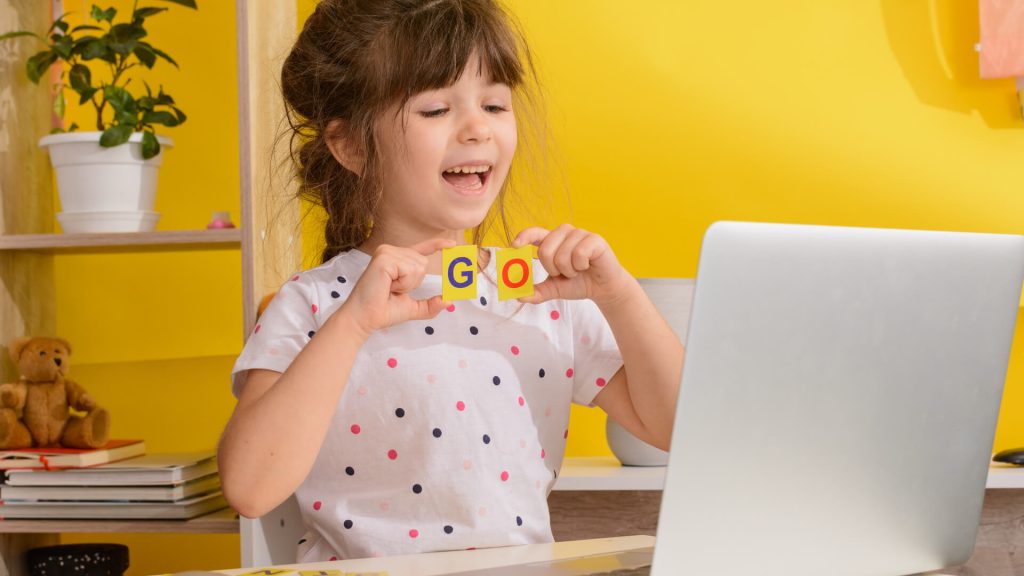When Should I Worry about My Child’s Speech?
Feb 10, 2022 Children’s speech should be about 75% intelligible by the time they are three-years-old. This means that you, and more importantly unfamiliar listeners, should understand almost everything your three-year-old says.
If your child has trouble with a few sounds at this point, but people unfamiliar can easily understand him/her, your child is likely developing speech sounds typically.
In This Article
Speech-Language Pathologists typically don’t assess speech sounds (articulation and phonology) until a child turns three-years-old. This is because their oral musculature and motor planning system is still developing; therefore, experts don’t expect kids to be able to say most sounds until they are three-years-old.
Articulation Milestones
The Short Answer: All listeners should understand your child’s speech by three-years-old.
Boost Your Child’s Speech Development!
Improve language & communication skills with fun learning!

Children’s speech sound acquisition develops over time. Since every child is different and development varies, there is a typical range for acquiring speech sounds.
- One–two-years-old: P, M, B, T, D, N, W, H
- Two–three-years-old: K, G, F, Y
- Three–five-years-old: S, Z, L, V, SH, CH, J, R
- Five–six-years-old: R-blends, TH
If your child does not have the sounds listed above by the stated age range, contact your local Speech-Language Pathologist to schedule an evaluation to assess articulation.
The latest developing sounds and explanations are listed below. These sounds include:
- ‘R’ – This includes R-Blends (i.e., ‘grow.’) and Vocalic-R (i.e., ‘-or,’ ‘-ar,’ ‘-air,’ ‘-ear,’ ‘-ire,’ & ‘-er’)
- Voiced ‘th’ (i.e., brother & those)
- Voiceless ‘th’ (i.e., thumb & bath)
- L-blends (i.e., blue & slide)
- ‘S’ – A lateral lisp (sounds like Donald Duck!) is never developmental and formal speech therapy is likely necessary, as your child will be unable to self-correct this lisp on their own. Have your child assessed as soon as you hear this type of error. A frontal lisp (your child’s tongue pushes forward, sometimes through the teeth) can self-correct; however, it may be wise to seek an evaluation at three-years-old in order to assess your child’s swallow pattern, as well.

If your child does NOT have L-blends or ‘R’ by six years old (kindergarten), contact your local Speech-Language Pathologist to schedule an evaluation to assess ArticulationIf your child does not have the ‘TH’ or ‘S’ sound by seven-years-old (first grade), contact your local Speech-Language Pathologist to schedule an evaluation to assess Articulation. Articulation deficits refer to an inability to produce sounds due to incorrect motor movements (of the mouth, tongue, lips, etc.) and/or placement.
Recommended article
Phonological Processes
The Long Answer: There are different types of speech sound disorders
If you (parents/caregivers), close friends, and relatives understand much of what your three-year-old child says, but people unfamiliar to your child do not, this may be a reason for concern. When you have a lot of trouble understanding a child’s speech, after three-years-old, it is often attributed to a speech sound disorder where children use patterns of speech sound substitutions, called Phonological Processes
(this is different and more complex than an articulation impairment). This disorder can range from mild to severe and should be identified and treated at three-years-old, in order to remediate and prevent further difficulties with phonological awareness skills.
Phonological Awareness skills are considered the building blocks of reading. Having strong Phonological Awareness skills allows a child to recognize and work with the sounds in their language. Some of these skills are rhyming, syllable counting, blending and segmenting sounds, alliteration (i.e., Sally sells seashells by the sea shore), and more. In comparison to an Articulation disorder, a Phonological Disorder is due to a child experiencing difficulty learning and organizing speech sounds – their hearing is perfectly fine, but they have difficulty differentiating between similar sounds and accurately producing these same sounds. The top three most common Phonological Processes are:
- Fronting (i.e., Cat → Tat, Go → Doe)
- Stopping (i.e. See → Dee, Fish → Pish)
- Final Consonant Deletion (i.e., Hat → ha_, Up → U_)

Additional Indicators of Delayed Phonological Awareness Skills
Preschool children may have difficulty:
- Learning and disinterest in listening to nursery rhymes or rhyming stories
- Counting syllables
- Recognizing repeated sounds or alliteration
School-age children may have difficulty:
- Identifying a sound they hear in a word (i.e., “What is the first sound you hear in ‘cat?’”)
- Blending individual sounds to read a word
- Creating rhyming words
- Confusing similar sounding words (i.e., speak vs. teak).
All children use Phonological Processes as their speech and language develop, but by age three most processes should no longer be heard. For more Information on Speech Sound Acquisition, Children’s Speech Intelligibility, Phonological Processes, and more or to book a consultation with Speech-Language Pathologist and Board Certified Behavior Analyst Martie Krol, visit MiniMeManagement.com
